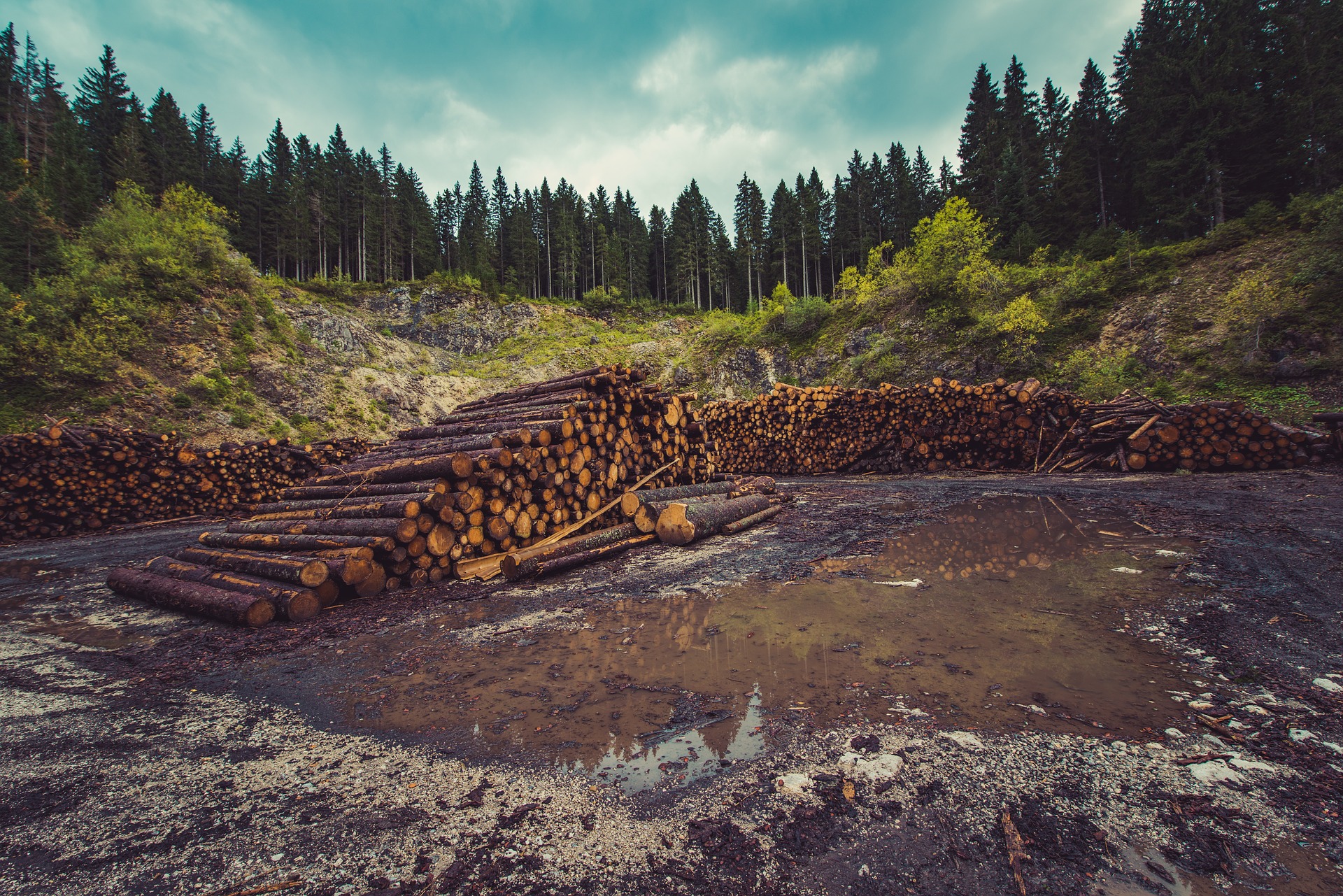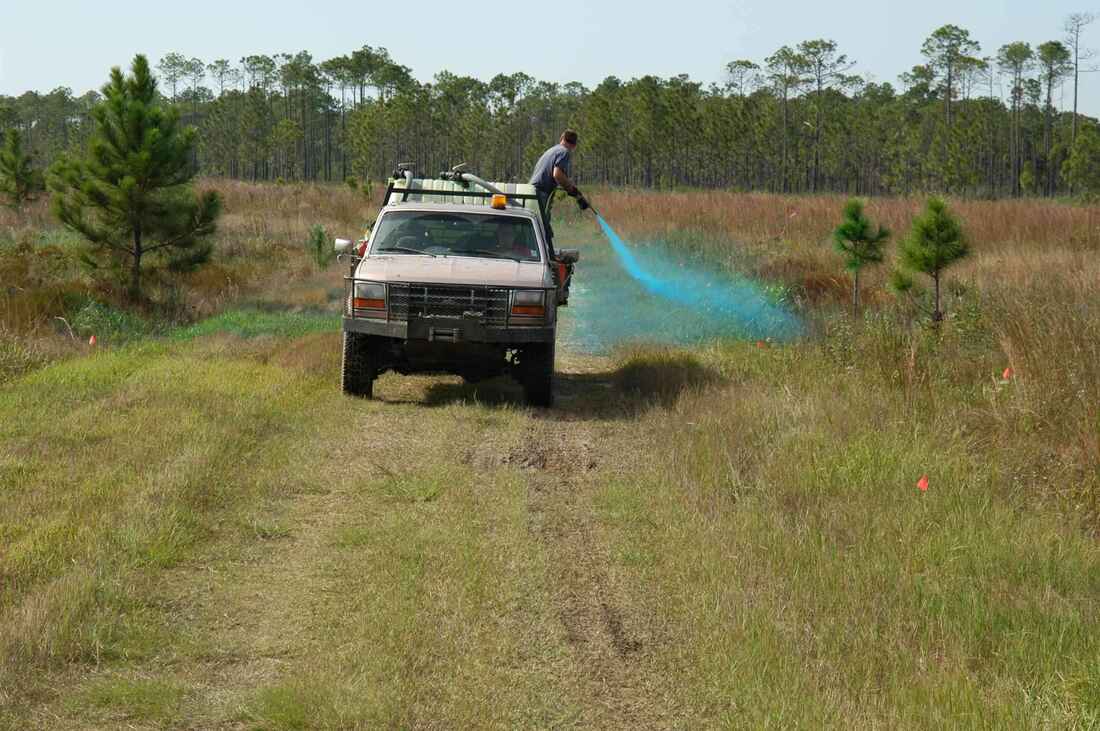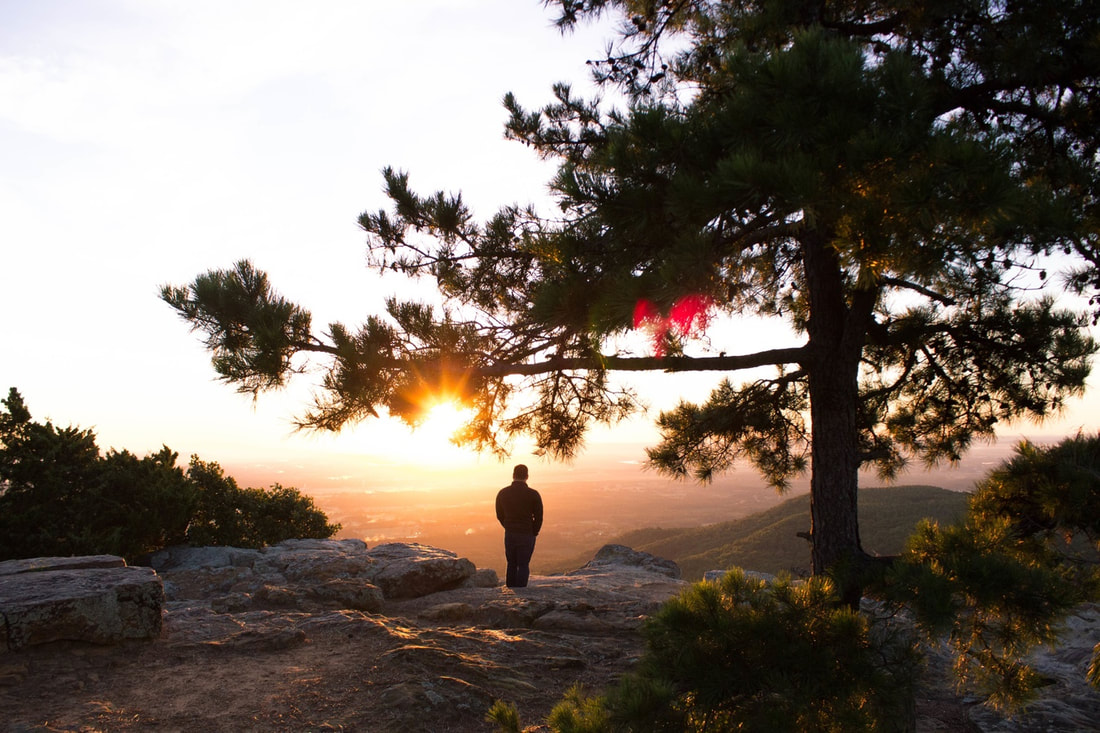How much does Human Welfare depend on Nature? | Part 3: The Ecological Crisis

In part 2, I explored how our desire for foods or substances that are detrimental to our health in excess, is leading to extensive environmental damage due to large scale manufacturing and waste. In this part, I will examine factors that have been well known to damage our environment for some time and explore how these factors are also damaging our well-being more directly than we think.
Save our trees
One of the first scientific concepts we learn in school is photosynthesis – the conversion of sunlight and carbon dioxide in the air into oxygen, by green chlorophyll contained in chloroplasts in the leaves of plants and trees. Oxygen is the very gas that is necessary for us to live. Combined with glucose it fuels every single cell in our bodies. Without it, we will die – it cannot be emphasised enough! And yet when housing is built, more land is needed for agriculture, or precious metals are mined, trees are swept aside as if they are a mere obstruction, often illegally. It is estimated we have lost more than half of the planet’s tree cover since humans came into existence [1]. Currently in England, we are battling the prospect of the HS2 high speed railway line, which despite not yet having the official go-ahead, has already caused the clearance of green areas, with many more ancient woodlands under threat, some of which are hundreds of years old. Such ancient trees support rare wildlife species and ecosystems that are so complex, we still don’t fully understand them. While this has so far had a negligible effect on atmospheric oxygen due to production from other sources such as oceanic plankton, it is only a matter time before the balance tips over the edge.
It has been reported that atmospheric oxygen was historically as high as 35%. Current oxygen levels lie at 21%, close to the 19.5% oxygen percentage considered the minimum safe level for human life. While recent drops in oxygen levels have been negligible, it is not clear how quickly it could drop in the future as various sources of oxygen continue to be threatened in addition to trees such as marine plants and oceanic plankton (described in part 1). While global oxygen levels are safe, some reports suggest oxygen levels can drop to unsafe levels in major cities, especially during hot weather. This could lead to the biological condition known as hypoxia, where our bodily tissues are severely deprived of the necessary oxygen required to survive. Symptoms include breathlessness, nausea, fatigue and low blood pressure. If oxygen levels are only marginally lower in cities but not low enough to cause obvious symptoms, it’s possible that chronic exposure to slightly lower atmospheric oxygen could have more underlying disease effects. Chronic local hypoxia in our bodily tissues has been linked to various chronic diseases such as ischaemia (death) of brain and heart tissue, anaemia, and growth of new blood vessels fuelling tumours. And if hypoxia affects us, it could be affecting our wildlife too. In part 1, I explored how pollution contributes to so many diseases. Could low oxygen in cities exacerbate the detrimental effects of pollution? The evidence is lacking and warrants further research.
As the developed world desperately seeks ways to become carbon neutral, inventions have emerged such as recent publicity around Algae curtains. These curtains contain millions of algae converting carbon dioxide to oxygen, thus helping to rapidly oxygenate air in polluted cities. However, the algae have to be harvested regularly to remain functional and doesn’t bring the many other benefits trees bring to our natural environment. The other benefits of vegetation include their roots binding soil together and absorbing rainwater. Replacing vegetation with concrete or exposing loose soil means flooding and landslides are more likely. Large trees provide shade from the sun, essential in hot climates to protect wildlife and humans from the scorching sun and preventing our soils and bodies of water from drying too quickly. Plants provide us and other wildlife with the fruit and vegetables we depend on for our survival (more detail later). As detailed in part 1, they are the source of so many of our medicines like the anti-diabetic drug Metformin, Aspirin and Statins.
Trees also provide essential habitats for much of our wildlife from insects and reptiles to birds and monkeys. One example is how important they are for nesting birds. A recent clash between nature and development occurred when UK house builders were found to be covering trees surrounding their developments with nets, to keep nesting birds away and enhance their chances of obtaining planning permission to build. The island of Borneo has lost 90% of its virgin rainforest, primarily due to the rapid expansion of the palm oil industry. This is seriously threatening native wildlife, most notably the Orang-utan who depend on these forests to live. It’s not just the loss of trees that is harming wildlife in forested areas. In Gabon, Gold mining involves the use of chemicals like Mercury to extract Gold, causing further harm to local soils, habitats and wildlife, and destroying native forest.
Our sprawling cities and urban environments are becoming increasingly devoid of nature. Loss of trees mean a whole range of organisms and entire ecosystems, however small are lost. And loss of biodiversity means our lives are poorer as a result. Scientists have long been warning us that biodiversity loss will significantly increase the circulation of zoonotic infectious diseases, and the risk of spread to humans, as humans destroy more natural habitats and move closer to wildlife. The stress caused to wild animals also makes them reservoirs for infectious diseases. The COVID-19 pandemic has demonstrated how deadly this can be to humans, even when a virus with a low death rate emerges. Trafficked Pangolins, which are highly stressed, were found to harbour a virus closely related to SARS-CoV2 and was highly effective at infecting human cells [14]. There are concerns that a far deadlier microorganism could emerge that is as transmissible or moreso than SARS-CoV2. For example, COVID-19 is estimated to have a 1-2% death rate, but the Ebola virus (which emerged from chimpanzees) has a 10% death rate.
Many tribal and indigenous populations have lived in harmony with their natural habitats for millennia. These populations are seriously under threat from the spread of logging, mining and intensifying agriculture. Many have already lost their lives trying to defend their homes, alongside environmental activists. Their homes and welfare are also under threat from uncontrollable wildfires triggered by loggers and farmers. Bushfires on the scale of what we have seen in Australia could rapidly add to carbon emissions and accelerate the warming climate.
So, before you think it’s ok to chop down forest to rebuild the Notre Dame cathedral, remember we can survive without a cathedral but we cannot survive without trees. The cathedral can be rebuilt using other materials, trees need decades or even centuries to re-establish themselves and the complex ecosystems they support. Is that a price worth paying? Most certainly not.
Insecticides/pesticides
Insects – those pesky little creatures that crawl around, get into our homes, buzz around our heads and food, eat all our plants and clothes, leave slime and cobwebs. You may not be a big fan of insects, except for pretty butterflies and bumblebees perhaps, but they are the foundation of our ecosystems. It is worth noting how out of touch the medical profession is with regards to what we need to live when Professor of Reproductive Biology, Lord Robert Winston once said there are many insects we don’t need. If doctors are here to save our lives, they need to understand the ecosystems that support our lives.

In 2019, it was reported our planet has experienced catastrophic declines in insect populations. They form a major part of the base of our food chain. They feed on plants, and are thus eaten by small animals like birds, mammals and reptiles, who are subsequently eaten by carnivores [2]. In many parts of the world insects are eaten by humans such as grubs, caterpillars and locusts, due to their rich protein and vitamin content. Hence insects have been proposed as a more eco-friendly source of protein compared to meat due to the low amounts of water and land required compared to farming, although further research is still needed on large scale production and the safety of insect protein [3]. Insects are essential decomposers, consuming and breaking down waste material from dead animals and plant matter that would otherwise litter our environment.
We depend on insects for our diet in more ways than one, due to their vital role as pollinators. From bees to butterflies, flies to moths, wasps to beetles, they seek nectar from flowers, transfer pollen from one plant to another and enable plants to reproduce. Pollination is essential to produce much of the food and beverages we consume such as fruit, vegetables, nuts, tea, coffee, rice, pulses, spices and honey. Many of these items are essential for us to lead healthy lives and reduce our impact on the environment by reducing our consumption of meat. Previously I explored how fruit and vegetables have anti-inflammatory effects reducing incidence of chronic diseases such as heart disease [4]. While the agriculture industry wants to control pests to increase yields, we cannot lead a healthy lifestyle without pollinating insects. We also need pollinating insects to produce materials derived from plants such as rubber, cotton, jute, bamboo and of course wood. Most pollination is performed by bees, in fact 80% of European wildflowers are pollinated by bees. However recent years have seen catastrophic declines in bee populations. UK and US beekeepers have reported up to 50% annual declines [5]. The declines are so dramatic that farmers have to ship bee colonies from elsewhere to pollinate their produce.
While climate change, pathogens and parasites are playing a role, agriculture seems to be killing its own industry. Intensive industrial-scale agriculture includes the widespread use of insecticides and pesticides. This is in addition to large-scale crop monocultures, loss of soil fertility and water contamination contributing to biodiversity loss. Insecticides can disrupt bee development, navigation, learning, feeding, spatial orientation, flower and nest recognition [6]. While the agriculture industry maybe enjoying improved yields now, the use of strong chemicals is backfiring as they pollute soils causing poorer plant growth and can even affect the health of farmers by causing breathing problems and neurotoxic effects (more details under part 2 – tobacco). Biotech companies have been using Hawaii as a testing ground for various pesticides. A few years ago, the Guardian reported a spike in birth defects close to plantations where pesticides were heavily used. This led to a ban on the pesticide Chlorpyrifos by the Hawaiian government [7]. Farmers are also contributing to insect declines with the medicated veterinary feeds they give to cows. Research carried out by the RSPB shows a decline in dung beetles and other insect populations who feed on cow dung that has been excreted by cows consuming medicated feed. This is diminishing the amount of food available for rare birds such as Choughs who feed on these insects [8].
Another industry that is wreaking havoc on our insect populations, in a somewhat ironic way as well, is the gardening industry. For decades emphasis has been on maintaining colourful blooms at the expense of so-called ‘pests’ or insects that are required to pollinate flowers and keep plant populations healthy. I once found a stunning Rosemary beetle on my plants, and when I searched online to identify it, I was dismayed to see the number of gardening websites referring to it as a pest. But the Rosemary beetle was still on my plants several weeks on and barely did any damage! The fact is insects consuming plant matter is part of a normally functioning ecosystem. And if you let nature take its course, it will deal with pests for you because in a healthy ecosystem, larger insects control smaller insects. I can speak from personal experience as spiders, hoverflies and larvae prevented aphids from sucking the life out of my sunflower plants, and no insecticide was required. There may be occasions where nature cannot act fast enough to save our plants, usually due to the fact that humans have interfered with our natural ecosystems for thousands of years, and it may never be possible to restore the balance to exactly how it once was.
An erroneous concept in the gardening industry is the ‘weed’. If you speak to a naturalist, there is no such thing as a weed. While small plants such as dandelions, thistle and nettles are highly invasive plants, they produce wildflowers essential to support pollinating invertebrates and subsequently the animals that feed on them. Thus the extensive use of herbicide in our gardens and in farming is linked to biodiversity loss [9]. Another detrimental activity is the production of peat-rich compost to nourish our potted plants and garden blooms. Peat is accumulated decayed vegetation and organic matter and is thus rich in nutrients for plant life. Peat bogs, as mentioned earlier, store more carbon that our planet’s forests combined, making them vital carbon sinks. To produce peat-rich compost, peat bogs are ravaged often in places rich in biodiversity and rare species of wildlife. As a result, the extraction of peat for compost production is destroying biodiversity in many locations.
Despite its grim past, the gardening industry is becoming aware of the problems it is creating following many public information campaigns by naturalists and environmentalists. As a result, garden centres label plants on sale as good for bees or pollinators, and manufacturers are exploring peat-free alternatives to compost production such as coir and composted pine bark. But more needs to be done to curb the large scale use of pesticides. Recent EU legislation to ban neonicotinoids, largely suspected to be neurotoxic to bees, is a step in the right direction. But insect declines are still happening fast so we must push for a ban of all insecticides and herbicides, while facilitating natural forms of pest control.
Mental Health
As the human population grows, towns and cities expand, natural habitats are cleared to make way for yet more concrete, artificial light pollution blankets out the night sky and the milky way galaxy, noise pollution drowns out birdsong, air pollution dampens the scent of flowers, the demands of working life never stop. As a result, our sleep quality diminishes while the incidence of cardiovascular and lung disease rises. And it’s not just our physical health, city dwellers suffer more mental health problems than countryside residents [10], crime is also on the rise in cities as living standards and access to resources suffer from the pressure of growing populations. So, does becoming devoid of nature negatively affect our mental health?

It’s difficult to draw broad conclusions as cities have varying degrees of green spaces and many cultural differences, but there is increasing evidence that engaging with nature is good for our health. A recent UK government survey showed at least 2 hours a week of exposure to nature, whether in your garden or a public space, even recycling and watching nature documentaries, is linked to better health and wellbeing [11]. Recently Joe Harkness published “Bird Therapy” detailing how becoming a birdwatcher helped him to manage his depression, which at one point made him suicidal. It seems nature is able to bring the calmness lacking in stressful modern-day life and allows us to be more humble. Appreciating the simple things in life brings a different perspective to our psychology that reduces anxiety. It is also associated with lowering blood pressure, increasing concentration and boosting compassion, akin to the benefits of meditation [12]. Spending time with nature has also shown huge benefits for individuals with disabilities, who are often frustrated by their lack of mobility. In Japan, forest bathing has been prescribed for conditions such as depression, obesity, heart disease and diabetes, and NHS nature prescriptions were recently introduced in Scotland [13]. Nature also provides an opportunity for social communities to bond and bring together people from a variety of age groups and ethnic backgrounds. So the more time we spend with nature and preserving it, the better it is for our health and entire communities.
In Part 4, what is the solution and how do we prioritise planetary health?
References
[1] https://www.independent.co.uk/environment/earth-has-lost-more-than-half-its-trees-since-humans-first-started-cutting-them-down-10483189.html
[2] extension.entm.purdue.edu/radicalbugs/index.php?page=importance_of_insects
[3] academic.oup.com/jn/article/149/4/545/5428116
[4] 6 ways to cut your heart attack risk https://beatingit.weebly.com/blog/6-ways-to-cut-your-heart-attack-risk
[5] https://e360.yale.edu/features/declining_bee_populations_pose_a_threat_to_global_agriculture
[6] http://sos-bees.org/causes/
[7] https://theecologist.org/2018/jun/18/hawaii-bans-use-harmful-pesticide
[8] https://community.rspb.org.uk/ourwork/b/biodiversity/posts/dung-detectives-dung-medicines-insects-and-birds
[9] http://www.hse.gov.uk/pesticides/topics/publications/research-reports/the-impact-of-herbicides-on-weed-abundance-biodiversity.htm
[10] https://www.theguardian.com/cities/2014/feb/25/city-stress-mental-health-rural-kind
[11] www.gov.uk/government/collections/monitor-of-engagement-with-the-natural-environment-survey-purpose-and-results
[12] academic.oup.com/heapro/article/21/1/45/646436
[13] https://community.rspb.org.uk/ourwork/b/scotland/posts/here-is-your-prescription-for-nature
